Import and Export Global Profiles and Project Profiles In Primavera P6
P6 Loader functionality to help with P6 security profiles...without all the checkboxes
Maintaining the same Security Profiles across multiple databases (or Primavera P6 instances) within your organization can be a huge pain if you want to keep everything in sync. You need to define your OBS structure, global and project profiles, and the association of users to global profiles and OBS nodes, and replicate that manually across your organization.
Creating matching security profiles is particularly tedious because the information is presented in P6 in checkbox lists which are hard to follow and very difficult to compare from one P6 instance to another. Version 8 is even more convoluted than Version 7, since the checkboxes are now tabbed.
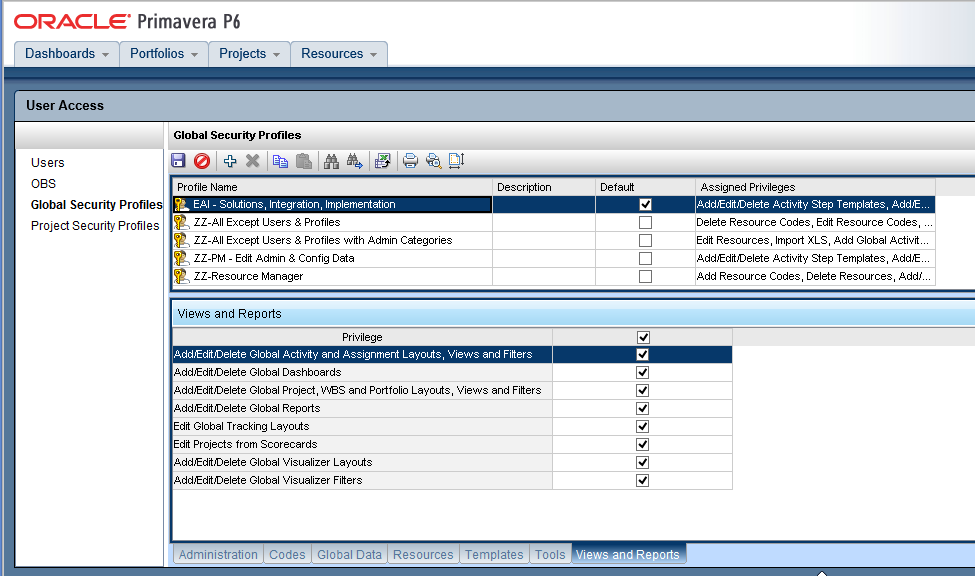
Who wants to manage this mess of Tabs, Checkboxes and Profiles?
We have found that as a result of the difficulty in working with profiles, many clients have profiles that have the same or similar names, but have very different permissions selected in their different P6 instances. For example the “Lead Scheduler” profile in one instance of P6 may have import privileges but may not in another instance. This causes confusion for the users and may even present a security risk.
With the P6-Loader, you can export and import Global Profiles and Project Profiles, getting them out of Primavera P6 into Microsoft Excel, making it easier to compare and manipulate the data.
Below are simple examples of Microsoft Excel templates used to manipulate profiles exported from Primavera P6.
- A global profile from Primavera P6.
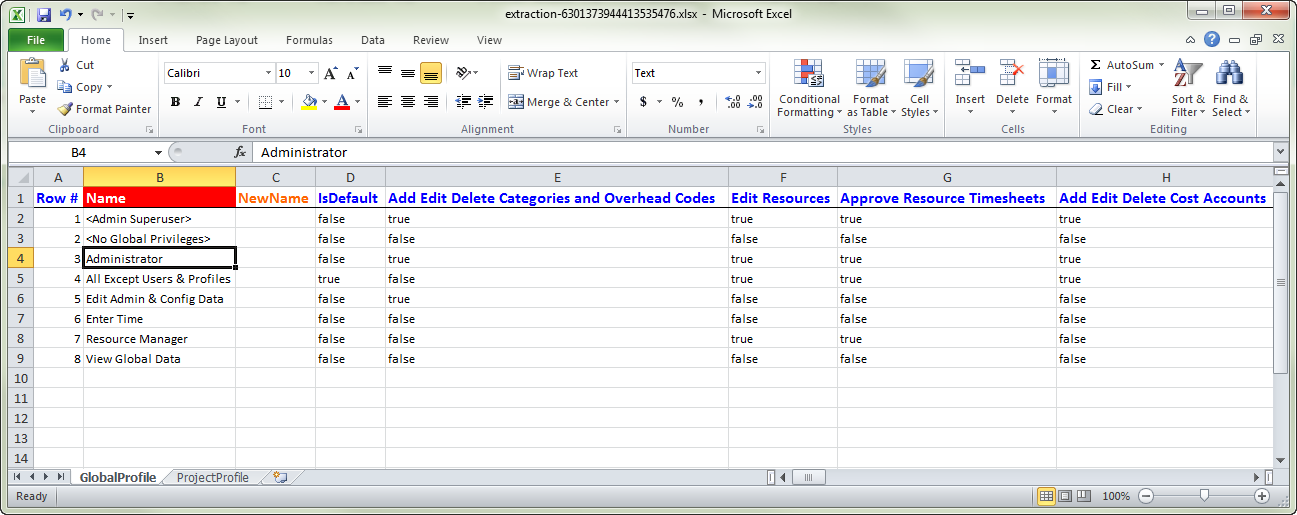
- A project profile from Primavera P6.
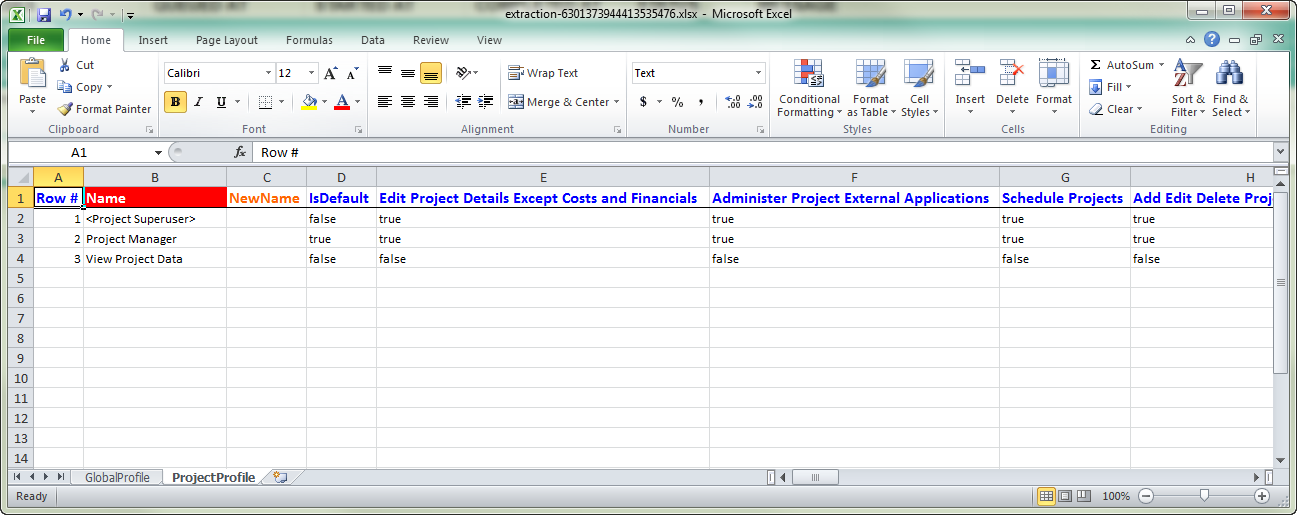
- An example showing all Primavera users.
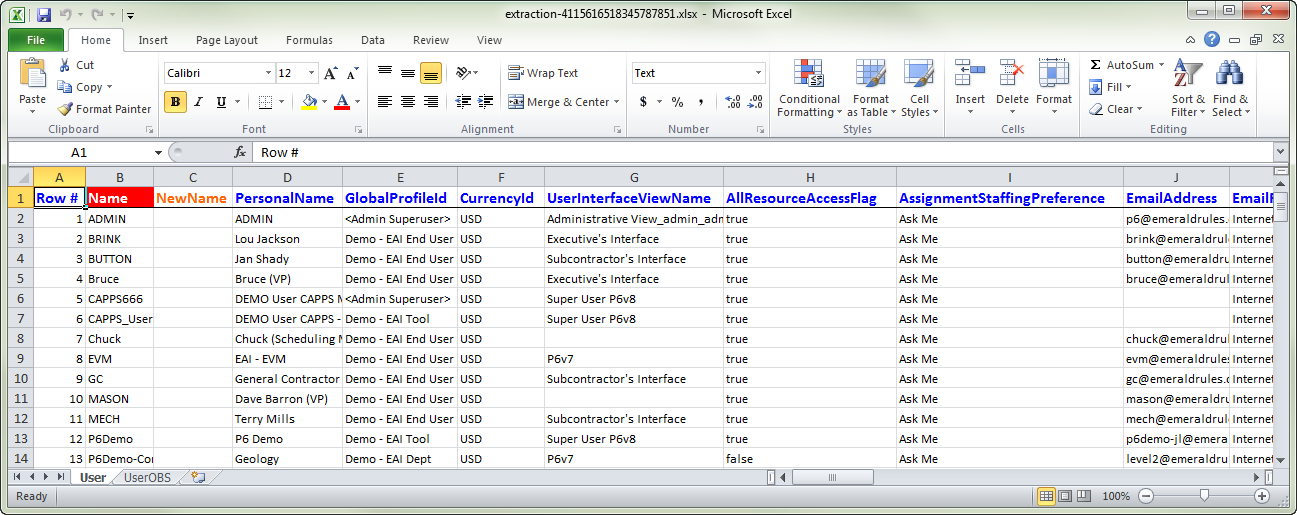
- An example showing which OBS nodes are associated with each user.
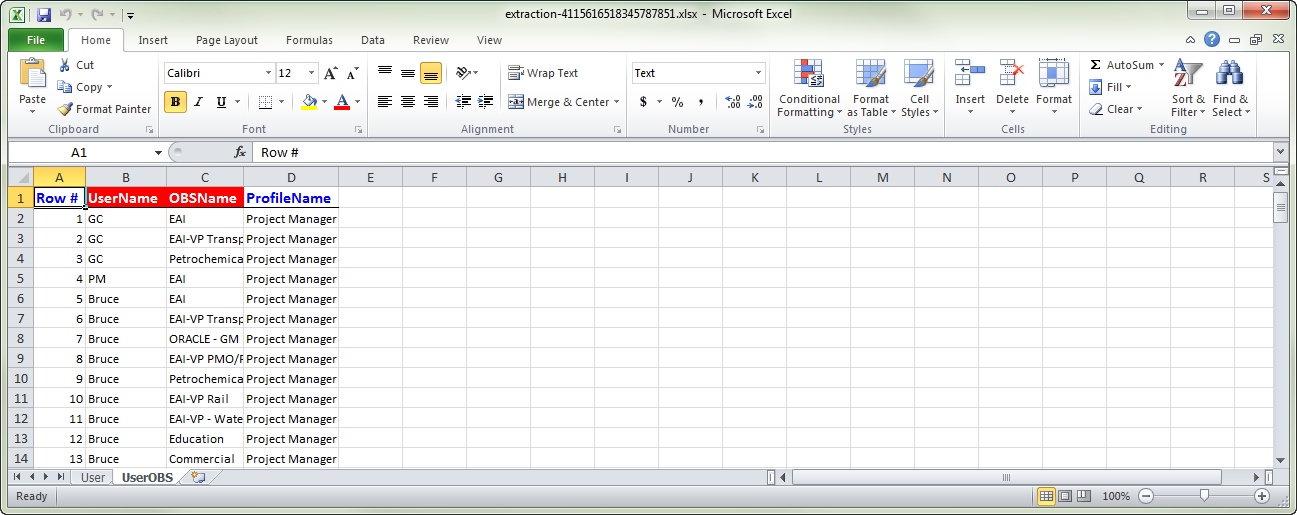
Now, you can use the P6-Loader to keep the same set of profiles across your organization.
Are you creating a new database and want to populate the users? The solution can be a few clicks away – just use the P6-Loader, and replicate, in seconds, a complete structure with:
- Your Global profiles and Project profiles
- Your OBS structure
- Your EPS structure
- Your users with the licensed modules already selected
- The OBS nodes associated to each user.
You can also use P6-Loader to remove users from specific OBS nodes. Suppose that you would like to know who is using the OBS element “Enterprise” with the “Project Manager” access. With a quick export, P6-Loader will list the users who have that association, and if you spot anything wrong, you can mass delete the wrong associations.
About the Author
Ravi Wallau - Integration Specialist
Ravi started working with computers as a child, programming with BASIC language on his MSX, a platform once popular outside of North America. In 1998, Ravi started an internship where he further developed his programming skills. After one year, this internship became his first job, where he gained experience developing industrial automation systems.
Over time, Ravi has worked in many different industries and programming languages, developing banking, integration and mobile solutions in C/C++, Java, Visual Basic and C # for a variety of platforms.
From 2007 to 2011, Ravi moved from Brazil, his native country, to Canada with the desire to live and learn another culture, as well as gain experience working in diverse environments.
Since 2009, Ravi has been an important part of the team at Emerald Associates. He has participated in key integration projects with major clients, such as CL&P, Suncor and Nexen, acting as the key technical lead in all phases of the projects. Ravi is also a key contributor at Emerald Associates in the development of unique in-house products such as TAPS, P6-Reporter (previously EP-datawarehouse), CAPPS, P6-Auditor and P6-Loader.
Ravi is a dedicated and insightful developer, one who prides himself on the quality of his work. He truly strives to provide optimal functionality so that each piece of a complex integration system fits together to give the end-user what they really need and more.